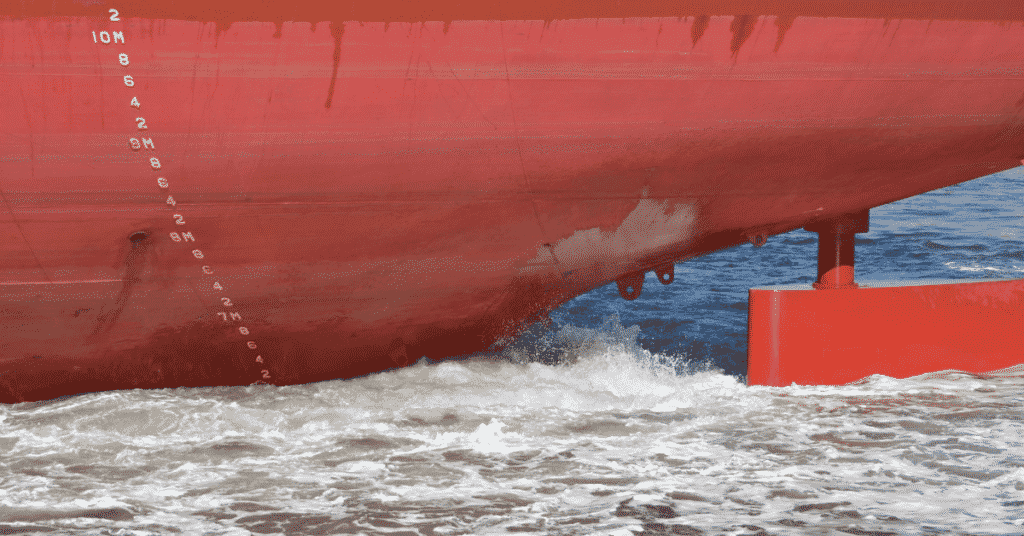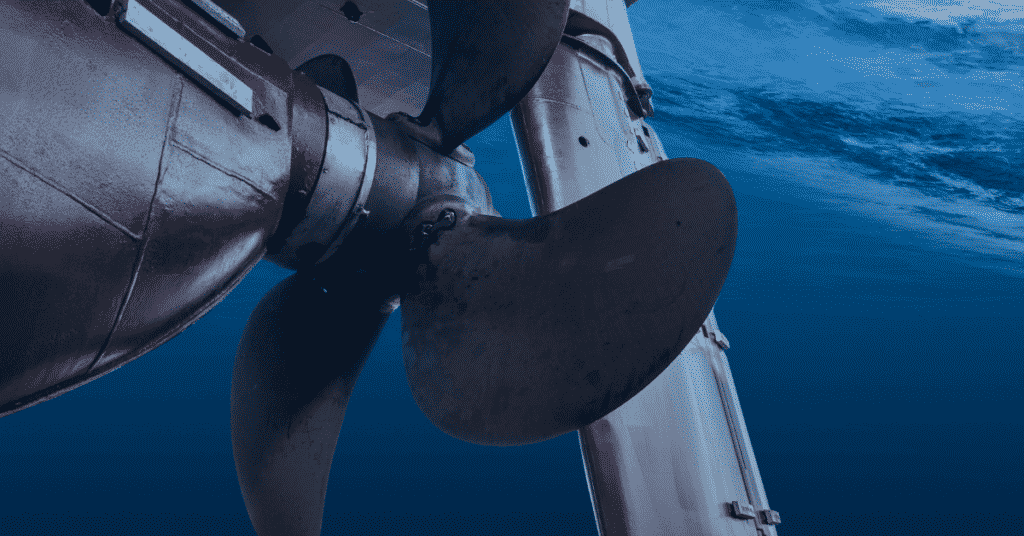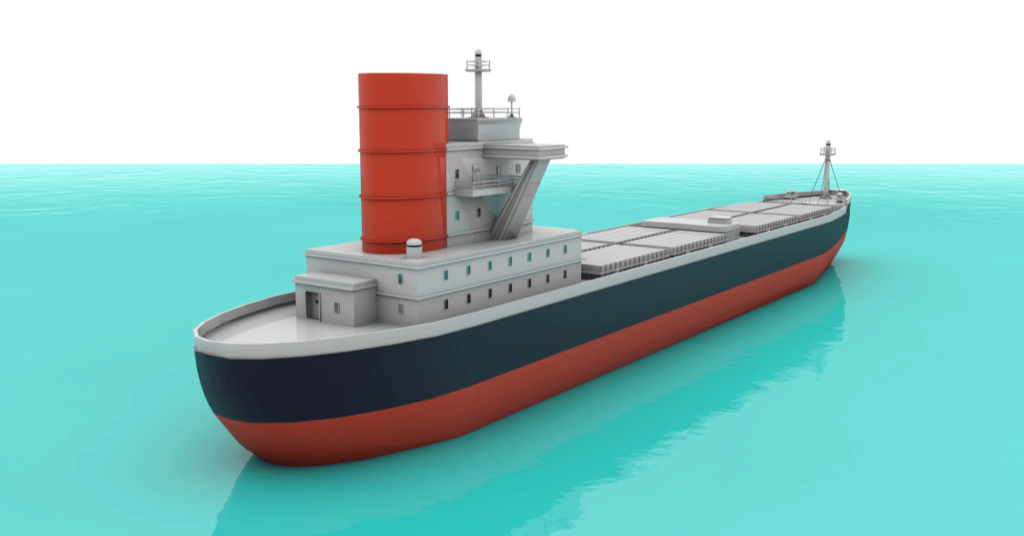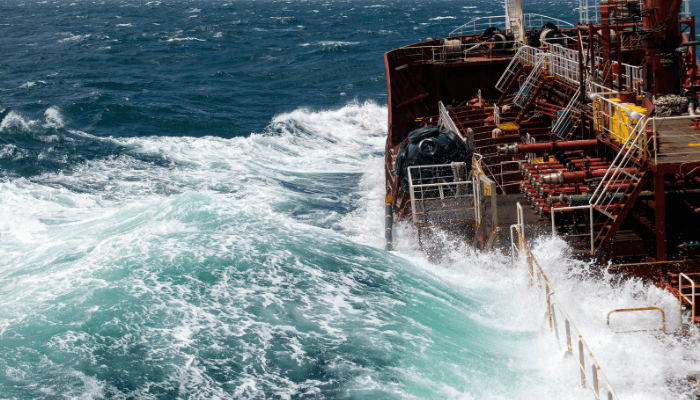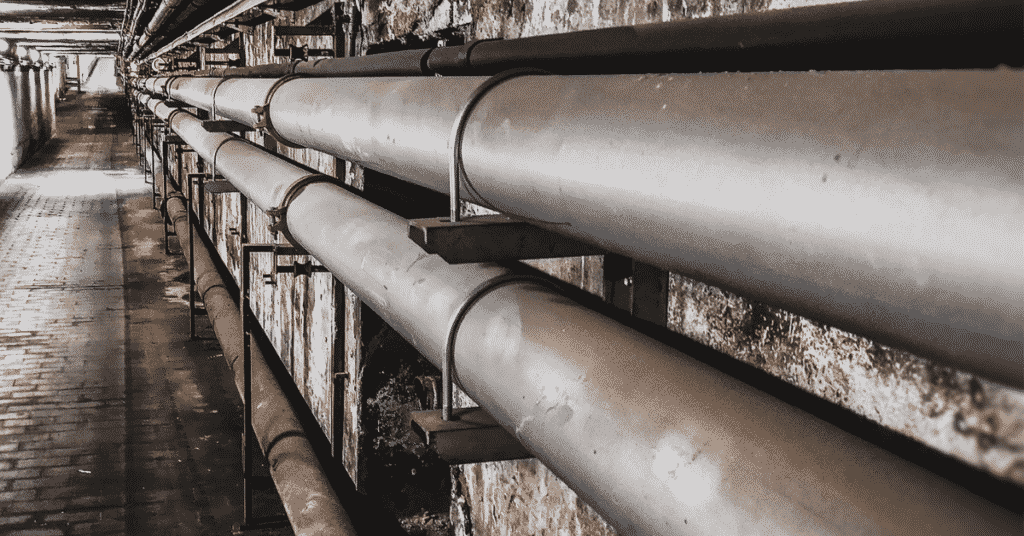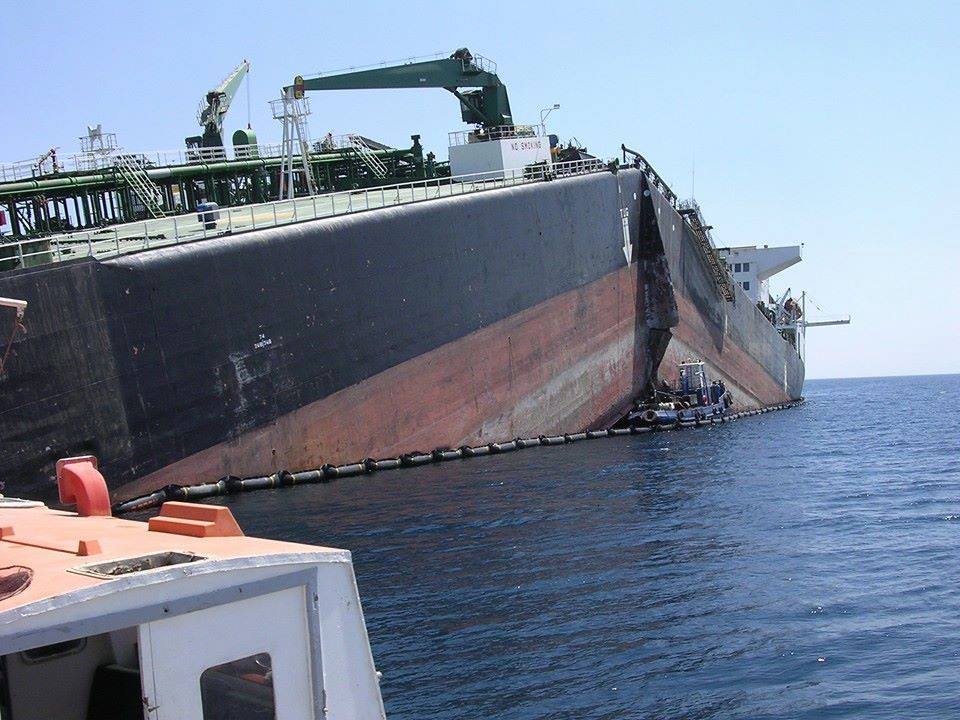What Are Vessel’s Particulars?
How do we define a ship? Apparently, we can define what type of ship it is by having a look. For example, if we look at the vessel shown below, we can say that it is an oil tanker.

By looking at Fig 2, we can say that it is a containership.
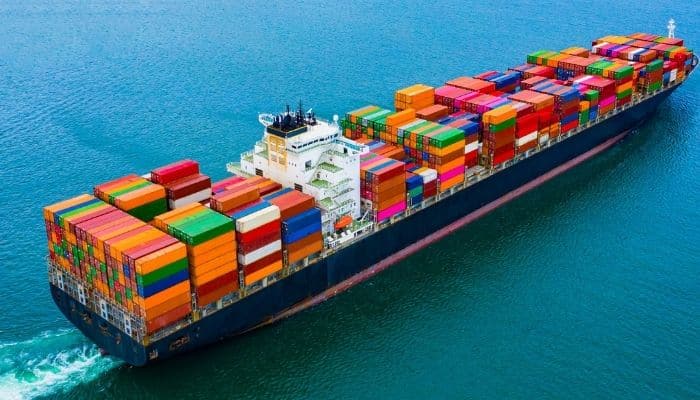
Moreover, we can also have an idea about the vessel in terms of the hull form. For example, by looking at a tanker or a bulk carrier, we can comment that the hull form of the vessel is bluff or fuller in form.
But from the grassroots stages of the design throughout the vessel’s service life, a vessel is identified by a set of parameters, also known as the vessel particulars. These are all the quantitative and definite aspects that define the vessel from its physical, design, functional and other general aspects.
What are vessel particulars?
So, let us divide these particulars into different groups as below:
Physical or geometric
These are all the basic parameters pertaining to the geometric definition of the vessel. These mainly include length, breadth, depth, and draft. These parameters further have further subclassifications.
For instance, we are aware of two kinds of dimensions: extreme and moulded. Extreme dimensions are those where the measurement is taken from one extremity to another. On the other hand, moulded dimensions are taken, excluding the thickness of the plating.
For example, extreme breadth means that the breadth of the vessel is measured from side to side athwartships, usually taken at amidships. On the other hand, moulded breath alludes to the breadth, excluding the thickness of the shell plating, as shown.
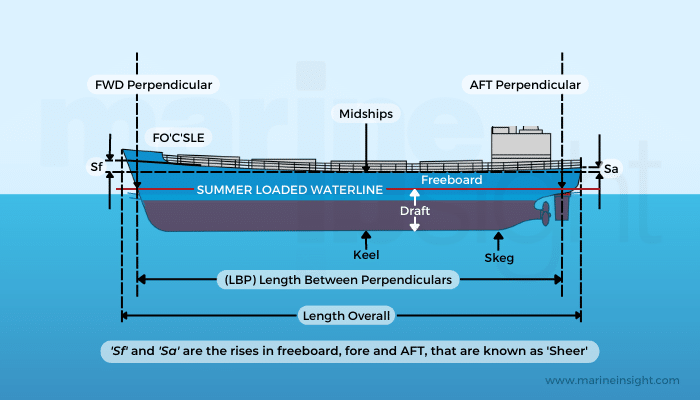
For length, there are different ways to define it: Length overall (LOA), the length between perpendiculars (LBP), and the length of the waterline (LWL).
Length overall is the maximum length of the hull from one extremity to another.
Length between perpendiculars or LBP is the length between the forward and aft perpendicular.
The length of the Waterline is the length of the hull measured along its waterline for revisiting these terms and having a closer look at them.
Depth, as we know, alludes to the maximum vertical measure of the hull taken at midships.
The draft is the vertical measurement of the submerged portion of the hull, usually taken at midships.
For all practical purposes, all these fundamental parameters of the vessel are measured in maximum values. The draft can also have other measurements, like forward draft or aft draft, when the vessel is at a trim.
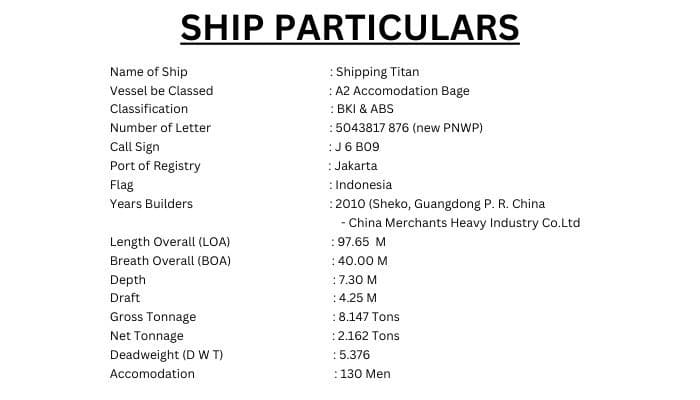
For the vessel on an even keel, all drafts measured along its length are equal.
Whatever may be the case, only the maximum values of parameters are taken as the geometric parameters of the vessel.
For all practical purposes, they are mentioned in almost all crucial documents of the vessel, starting from the general arrangement and the design drawings to all the technical documents about the vessel while in service.
Other than these measured parameters, other design coefficients are also used, like block coefficient, midship section coefficient, etc.
Speed
The speed of the vessel is another very important particular. The speed of the vessel may or may not be mentioned in the design drawings but is necessarily measured in every kind of technical and operational specification.
The vessel’s speed is usually defined by two specific values: maximum speed and service speed.
The maximum speed of the vessel is the highest speed that the vessel can attain at the maximum rated power of its engine.
Service speed is the speed under which the usually operates under normal operating conditions. For all practical purposes, the vessel’s speed is measured in knots.
Displacement
This is a major parameter for every vessel. The displacement, as we know, is the equivalent of the weight of the vessel.
As per Archimedes’ principle, any floating body must displace a volume of water weighing the same as itself. This is nothing but its displacement.
Displacement can be expressed in two ways: by weight and by volume. By weight, it means the weight of the water displaced that is mathematically equal to the weight of the vessel itself.
For example, when we say that a vessel has a displacement of 9000 tonnes, it means that it weighs, and to remain afloat displaces the exact weight of water. Conversely, by volume displacement, we mean the volume of the water the vessel displaces to stay afloat at the given draft.
Thus, a volume displacement of 10000 m3 means that the vessel displaces these cubic metres of water by the submerged part of its hull while in service. Multiplying this quantity by the density of the water yields the displacement by weight again.
For sea-going vessels, a value of 1.025 tonnes/cubic metre is multiplied by the volume displacement (in cubic metres) to yield the weight displacement (in tonnes).
For vessels plying in freshwater bodies like rivers and lakes, the displacement value is equal to 1. So, numerically, the value of displacement of a vessel in freshwater is the same by weight and volume. For vessels, this value of displacement further varies according to the loading conditions.
From a design and operation point of view, there are two loading conditions taken for all practical purposes. One is the fully loaded condition or the departure condition. This is the condition when the vessel leaves for departure from a port or dock towards its destination.
In this case, the fuel oil tanks, ballast water tanks, and all kinds of reserves and consumables (for both crew or passenger consumption and vessel operation) are in full. So, in this case, the vessel has the maximum possible weight and, thus, the displacement. This is also known as the deep-sea case.
Another loading condition is when the vessel is returning back to its port of arrival for its destination. Here, all the above-mentioned expendables are exhausted or nearly consumed en route.
This is known as the light-sea or light-load, or arrival condition. In this case, the displacement and weight are lesser than in the full-load case.
For most vessels, the maximum displacement (for full load) is the design displacement taken into final consideration. However, the light-load displacement is also important and is considered a part of the vessel’s particulars.
Tonnages and capacities
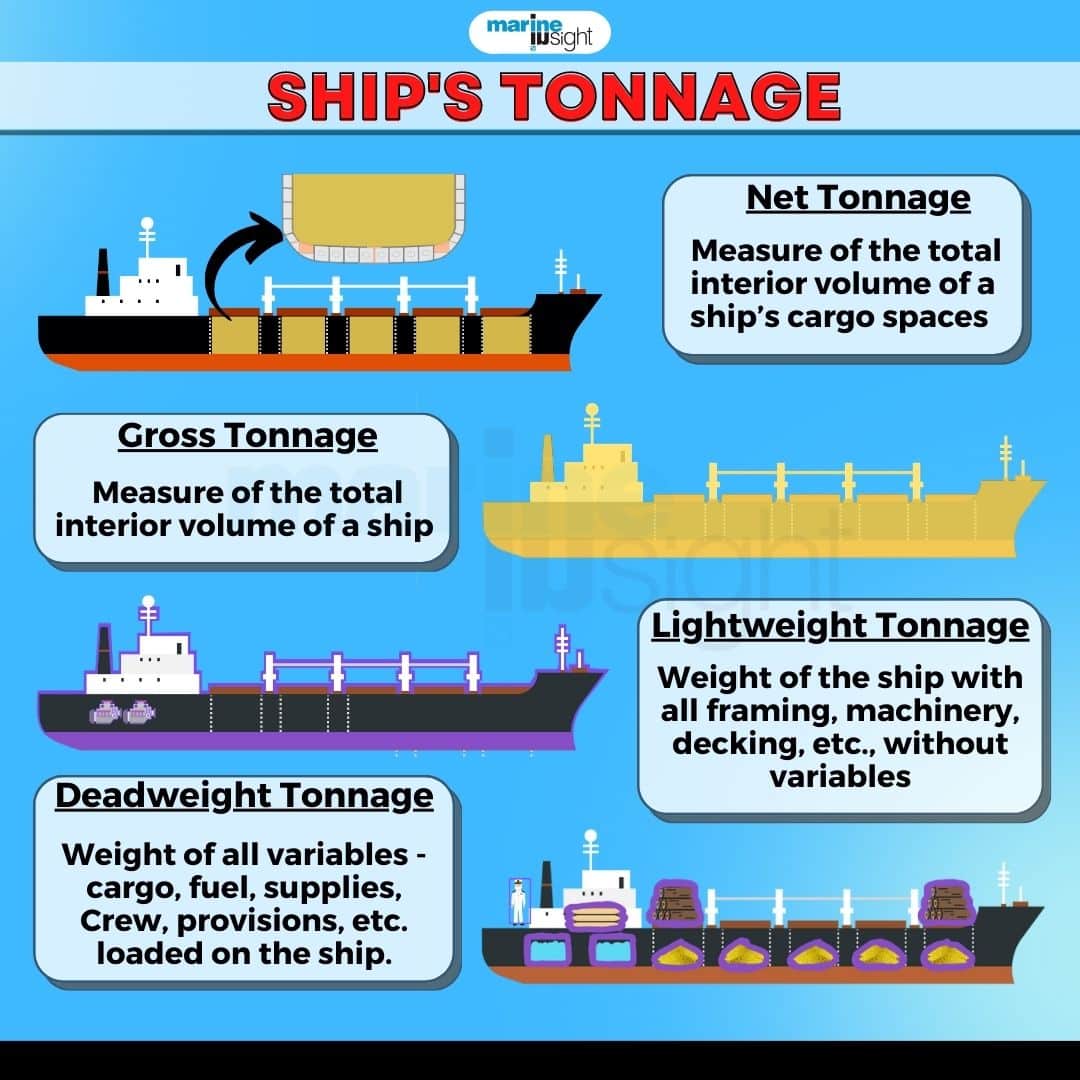
For all commercial vessels, these are very important parameters and integral parts of the vessel’s particulars.
Tonnage is basically the carrying capacity of the vessel. For cargo ships, it is measured as the weight or quantity of cargo to be carried.
For passenger’s vessels, it is the maximum number of persons the vessel can carry.
Amongst cargo vessels, for bulkers or tankers, the cargo is simply given as the weight of the cargo in tonnes.
In contrast, for containerships, it is given in terms of the number of container units carried. Remember the terms Gross Tonnage and Net Tonnage?
Engine and Machinery
These particulars are a part of the overall design of the vessel and are usually a part of technical specifications, build specifications, and all other sorts of documentation for operations.
They are essentially a part of the detailed contract design. They include the engine details, specifications, make, powering, ratings, fuels, etc., along with details of auxiliary types of machinery and equipment.
Usually, they are not a part of the design and structural inputs.
Port of Registry and Classification
All vessels have a port of registry and operate under a flag state. Military vessels pertain to a specific nation. Moreover, all vessels have a classification service under a specific classification society.
These are also essential parts of the vessel’s particulars.
A vessel can have one or multiple classification societies under its name, depending on the classification type.
Sea state, conditions of operation and Other generic particulars
These include the IMO number, which is like a unique registration identity for each vessel, call sign, vessel name, vessel type, owner details, operation company or line, year of build, and so on.
You might also like to read-
- Different Parts Of A Ship’s Hull
- Understanding Working of Hovercrafts
- What Do You Understand By Prow Of A Ship?
- Understanding Block Coefficient Of A Ship
- What Is Moulded Depth Of A Ship?
Do you have info to share with us ? Suggest a correction

About Author
Subhodeep is a Naval Architecture and Ocean Engineering graduate. Interested in the intricacies of marine structures and goal-based design aspects, he is dedicated to sharing and propagation of common technical knowledge within this sector, which, at this very moment, requires a turnabout to flourish back to its old glory.
Latest Naval Arch Articles You Would Like:
Subscribe To Our Newsletters
By subscribing, you agree to our Privacy Policy and may receive occasional deal communications; you can unsubscribe anytime.










